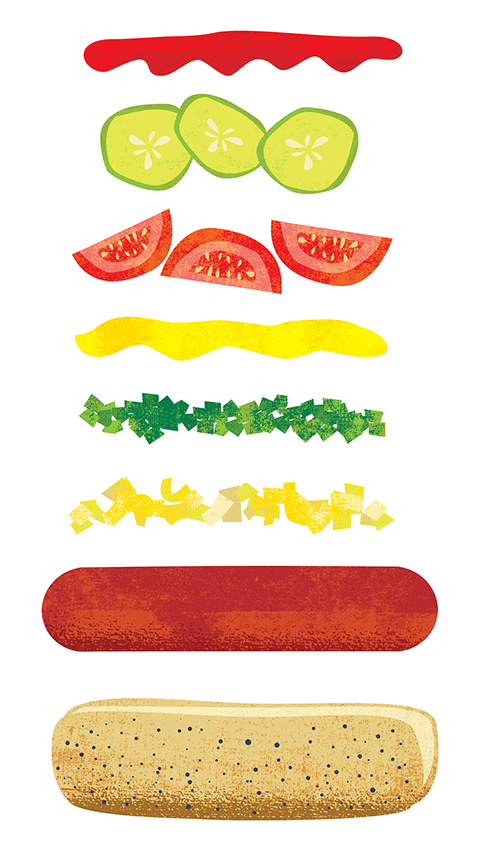-
Royalty Payments, Bundled Goods, and Chicago-Style “Red Hots”

THE IDEA: Firms often sell goods in bundles by offering two or more products (or services) as a package deal, usually for a discounted price. Bundles are everywhere: fast food value meals, cable television subscriptions with assorted channels, and even cold and flu medicine with several active ingredients combined into a single product. Customers could select and buy each component separately, but buying the bundled package is often cheaper or more convenient. Companies might also create bundles to compete more intensely with other goods – or with other bundles.
When assessing potential royalty payments in patent infringement matters involving bundled products, economic experts consider the following dynamic: The value of a patented technology included in the bundle will not necessarily increase in proportion to the value of the entire bundle. In fact, there may be cases where the value of the patented feature decreases when bundled with other goods. The importance of the patented feature may be swamped by the larger set of the bundle’s features. As a result, demand for the patented feature may become more elastic as consumers develop relatively inelastic demand for the bundle’s additional features.
THE EXAMPLE: To illustrate how this might happen, consider the Chicago-style “red hot.” This bundle comprises a hot dog; condiments including relish, onions, peppers, tomatoes, celery salt, and mustard; a pickle; and a poppy seed bun. Let us assume that ketchup is a single-ingredient patented invention, that everyone enjoys hot dogs, and that the more condiments added to (or bundled with) a hot dog, the better. Adding ketchup to a plain hot dog creates value, thus increasing profits; adding ketchup to a hot dog already topped with mustard, relish, and onions also adds value. However, as more condiments are added, the incremental profit from the “patented” good (ketchup) declines as a share of the bundle’s total profits. In this case, royalty payments to the holder of the patent on ketchup, which are a function of ketchup’s incremental profitability, would decline as well.
Royalty payments may also decrease when the patented good interacts negatively with existing goods in the bundle, thereby reducing the incremental profits from the patented good. In the Chicago-style red hot example, what if the value of ketchup decreases when it is added to a hot dog that already includes three other condiments? And suppose one of those condiments was tomatoes – often considered a (superior) substitute for ketchup. Now, we are presented with a scenario in which the value of ketchup declines not only because its share of total value decreases, but also because adding ketchup to a hot dog with tomatoes actually reduces the appeal of the entire bundle. In this case, people may still buy the hot dog, but the incremental value of ketchup to a hot dog “bundle” that already contains tomatoes is reduced.
-
There may be cases where the value of a patented feature decreases when it is bundled with other goods.
-
THE TAKEAWAY: The economic analysis of bundling in patent matters always returns to the same point: We must parse the incremental value of the patented invention in question from the value that consumers find in the bundle as a whole. The act of bundling has its own economic underpinnings, which may not be ascribed to the inclusion of the patented invention at issue. Indeed, there are cases in which combinations render patented features in bundles less valuable than they were on their own. ■
-
This article was adapted from “Some Economics of Royalty Bundling” coauthored by Senior Advisor Jeffrey Cohen, Managing Principal Divya Mathur, and Sidley Austin LLP Partner David Giardina. The article appeared in the May/June 2012 issue of Landslide, a publication of the ABA section of Intellectual Property Law.
From Analysis Group Forum: Winter 2013
